Best bikepacking bags 2025: our guide to packing for multi-day adventures
We share the best bikepacking bags for multi-day adventures and how to choose the best for you
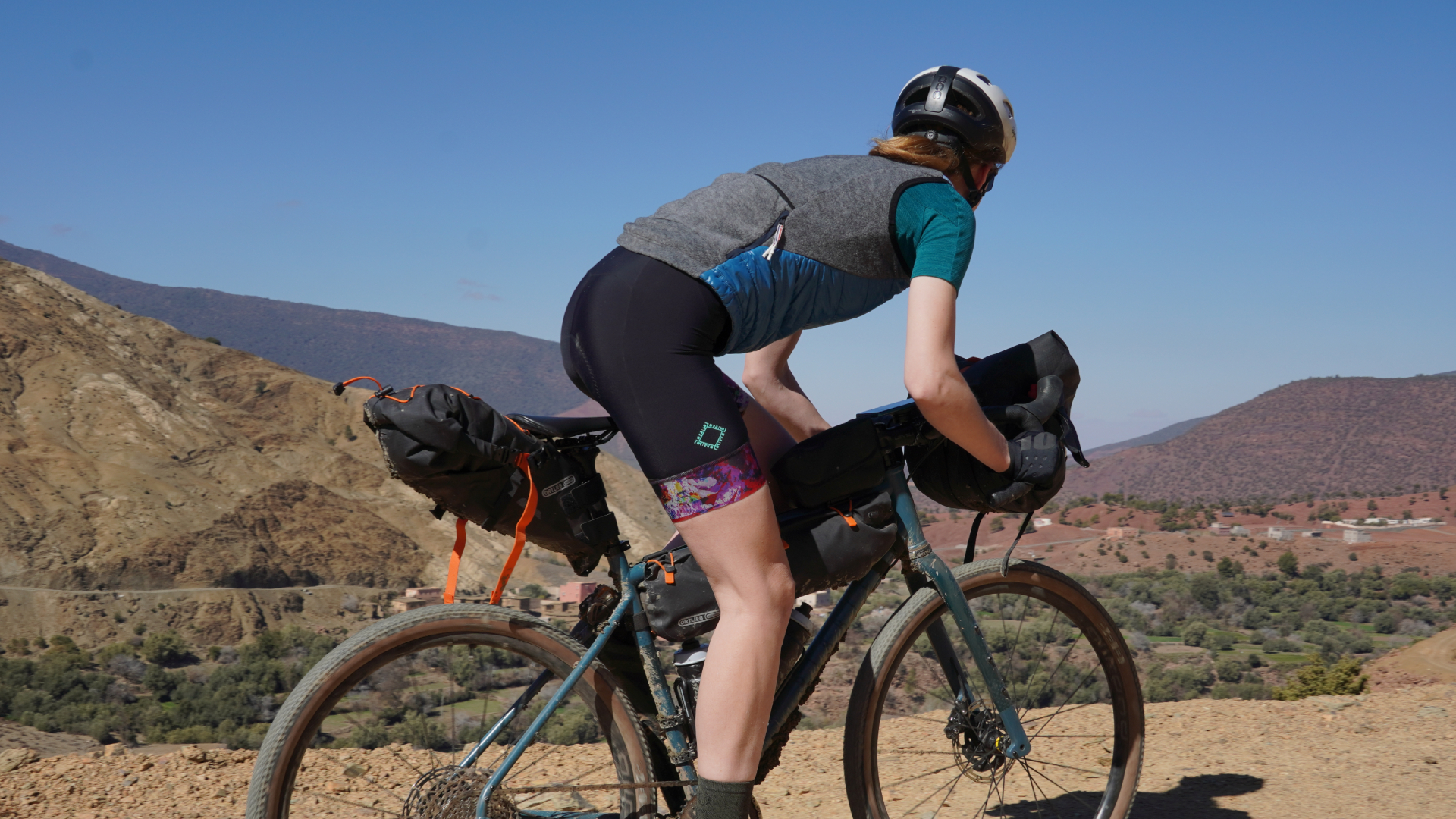
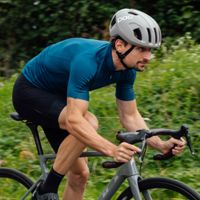
The best bikepacking bags allow you to travel light on your bike while still carrying all the necessary luggage for a multi-day trip. While bicycle touring is a long-established pursuit, bikepacking has quickly emerged as a leading trend in bicycle technology.
Certainly, its roots are to be found in traditional touring and Audaxing; where they differ is you can go bikepacking on any bike, including the best road bike and, more commonly, on the best gravel bikes. These lightweight bikepacking bags, mounted to the frame, handlebars and seatpost, allow you to carry varying loads on both roads and trails. This makes them adaptable for a range of self-supported trips, from mini-adventures to ultra-endurance events and more.
In this guide, we have tested during many long and short tours everything you need to get your bike set up and ready for a trip. Whether you're planning a quick overnighter equipped with little more than a camping stove and a bivvy bag or a big challenge like the Great Divide, this includes the best seat packs, top tube, frame and handlebar bags.
The best bikepacking bags work great when combined with the best cargo bib shorts and best gravel clothing, allowing you to store small essentials that you need quickly, such as your phone, wallet, or one of the best energy bars, without having to rummage around to find them every time.
If you’re new to bikepacking or just want some extra advice, at the bottom of this page, in our How To Choose section, you can find more details on all of the things to consider when buying bike luggage.
The quick list

With 11 litres of carrying capacity, I found the waterproof Blackburn Outpost does its job very well. The roll-top design is easy to use, and the harness facilitates quick attachment to the bike.
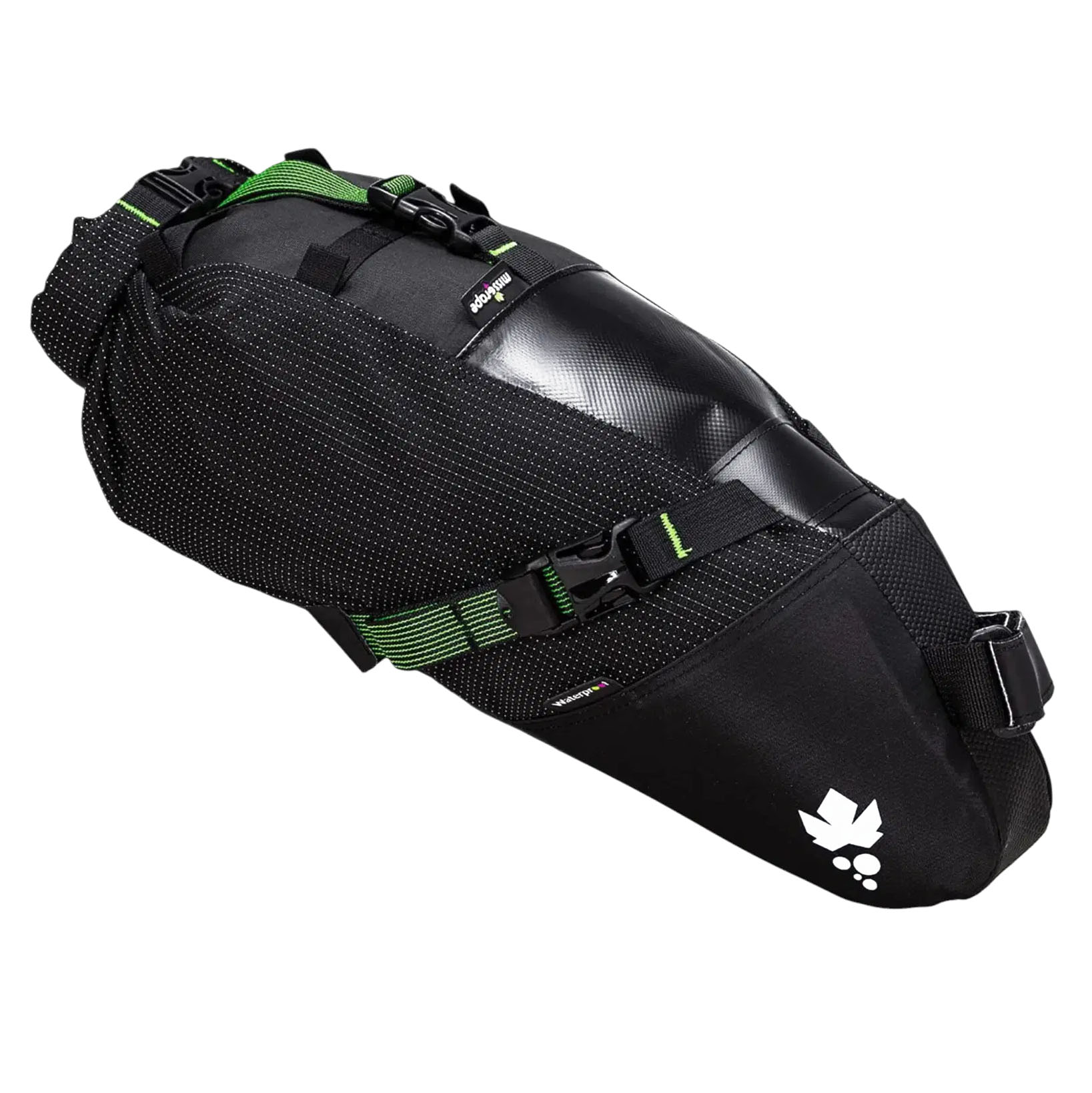
Ideal for lighter, smaller loads, the Miss Grape Cluster 7 is also perfect for those who don't have much-exposed seat posts to mount a pack on. After surviving a storm and covering a ton of miles, it's a bag we highly recommend.
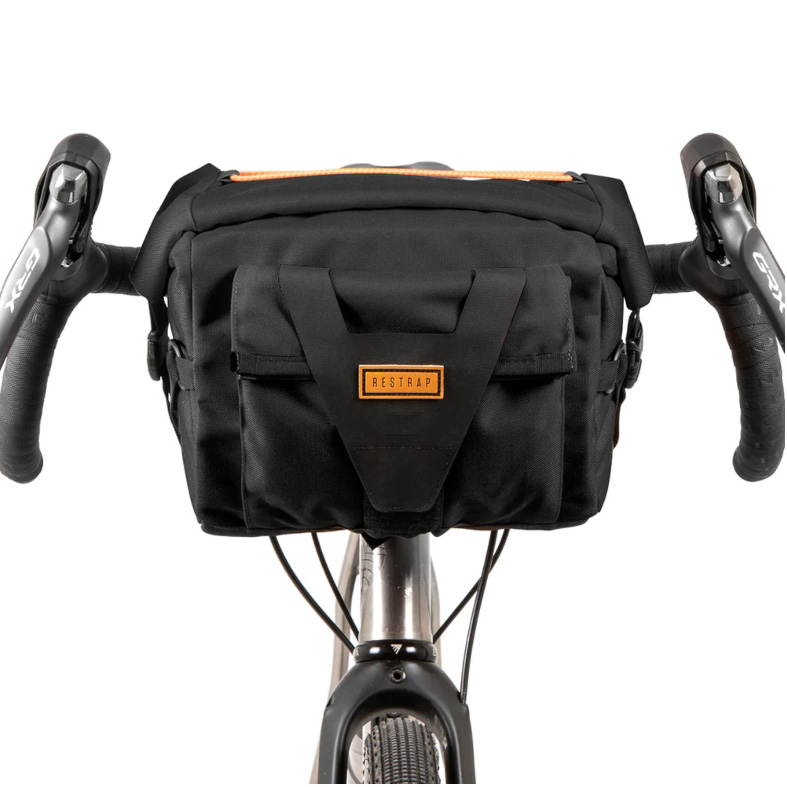
With a 10-litre capacity and a roll-top closure, Restrap's Bar Pack is perfect for larger loads. There is a smaller compartment to separate the cargo and allow access to some items on the go, while the waterproof fabric keeps everything dry.
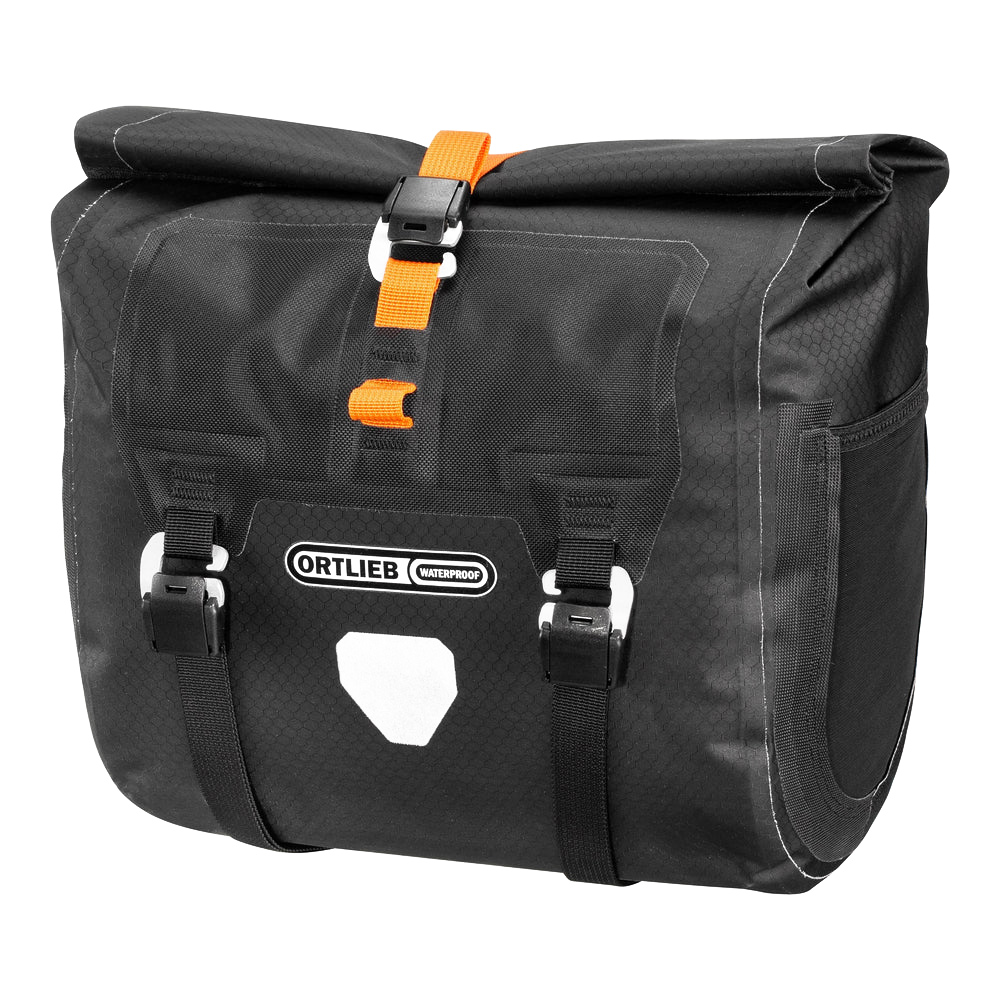
The huge selling point of the Ortlieb is its quick-release system; while my friends are trying to undo a plethora of straps, I'm off, tent up, showered, and ready for a beer. However, it is wide and bulky, so consider that if you have a narrow or aero setup.
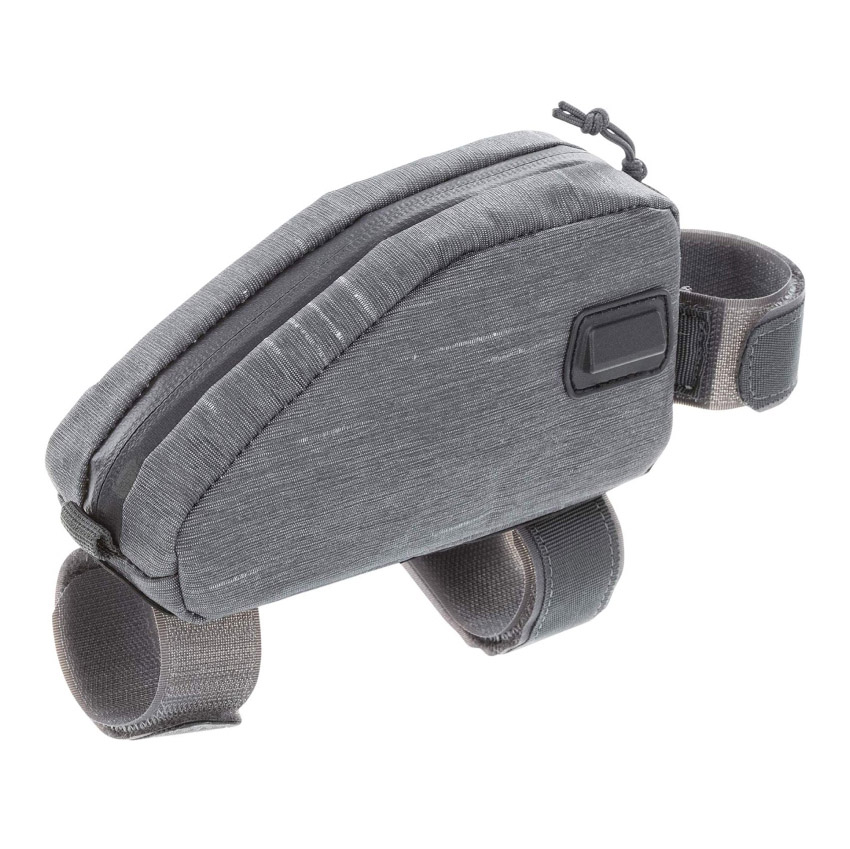
Evoc's Top Tube Pack may have only a 0.5-litre capacity, but its rigid sides and waterproof zip keep the contents secure and stable. The attachment is simple, and the addition of a cable port is a nice touch for keeping any handlebar tech charged up.
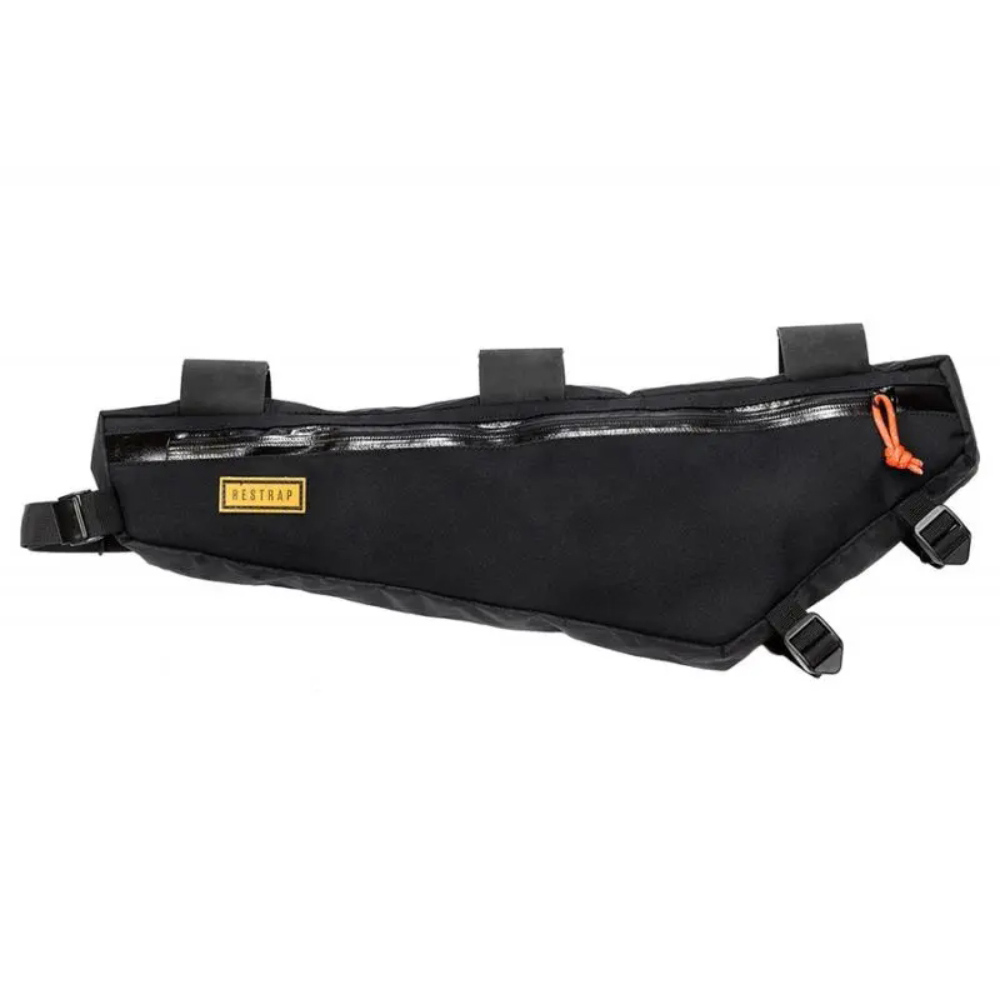
The five Velcro straps used to secure Restrap's frame bag held it very securely, meaning it didn't sway or wobble at all. There is access to this virtually waterproof 4.5-litre bag from either side, and a divider helps with organisation.
Our top-rated and Best bikepacking bags
Best seat pack

Specifications
Reasons to buy
Reasons to avoid
The Blackburn Outpost seat pack is a clever solution to add a lot of capacity and flexibility without bolting anything onto your bike. The bag itself is a roll-top dry sack and sits in a separate carrier that attaches to your bike, so it's easy to remove the bag for access in camp.
However, it does recommend not attaching to a carbon seat post (but we have in the past). It provides a great level of waterproofing, and its position does act as a bit of an ass-saver, but the extra weight up high does take a bit of getting used to.
The Velcro attachment straps were unfortunately noticeable on the back of the legs when pedalling, something worth considering if you're planning on being in the saddle for multiple days.
Read more: Blackburn Outpost seat pack full review
Best lightweight seat pack
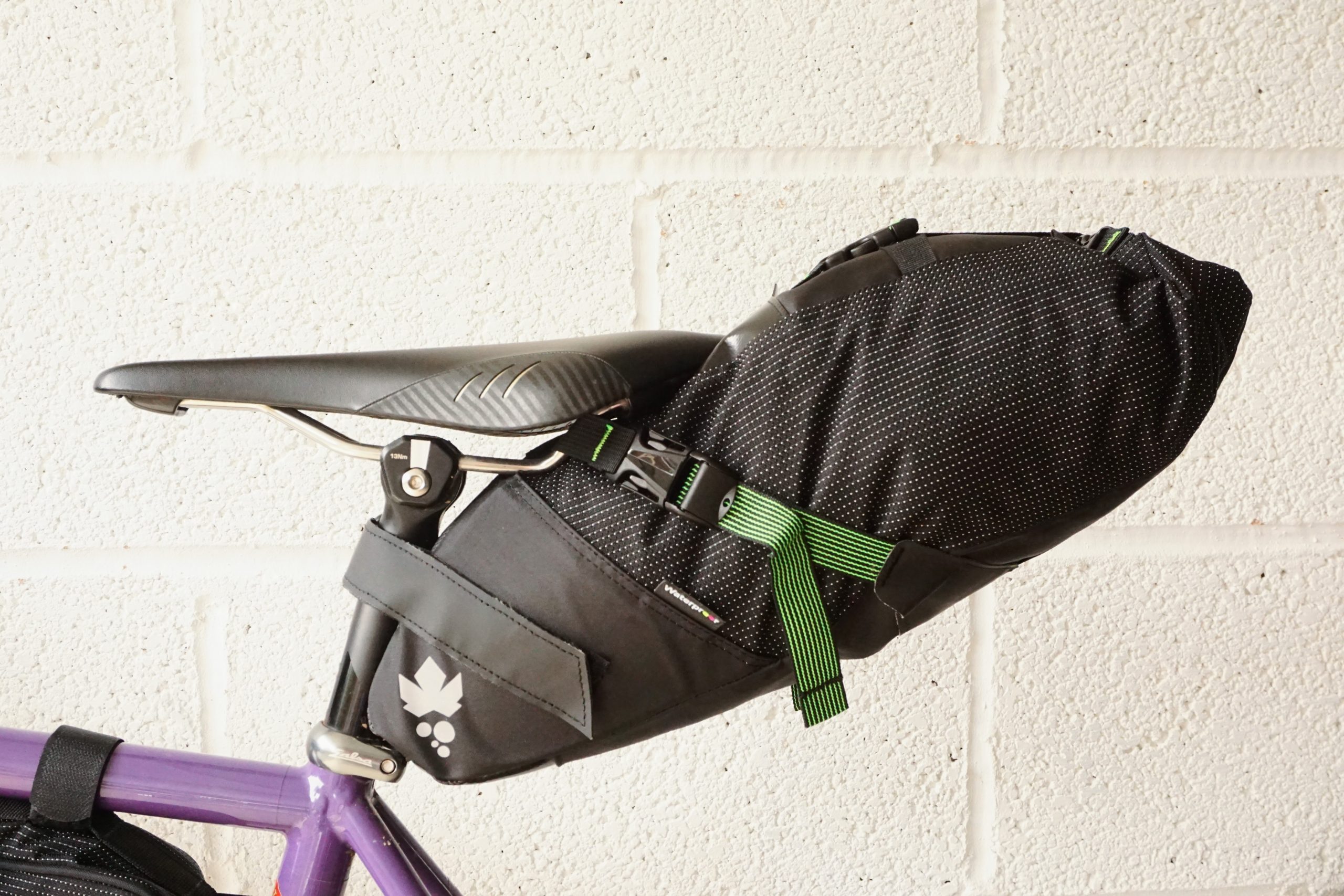
Specifications
Reasons to buy
Reasons to avoid
The Cluster bag is the smallest of Italian brand Miss Grape's seat post bags at 7 liters, which means that it works well for shorter seatpost lengths and shorter trips, although webbing loops on top allow stowage of extra items outside the main compartment. The rubber straps help to prevent damage to the bike and ensure a stable fit.
The roll-down top ensures water resistance, which we tested in a storm. Loaded up, the bag can sag a little, although it avoids sway and doesn't rub against the thighs as you pedal.
Read more: Miss Grape Cluster 7 seat pack full review
Best handlebar bag
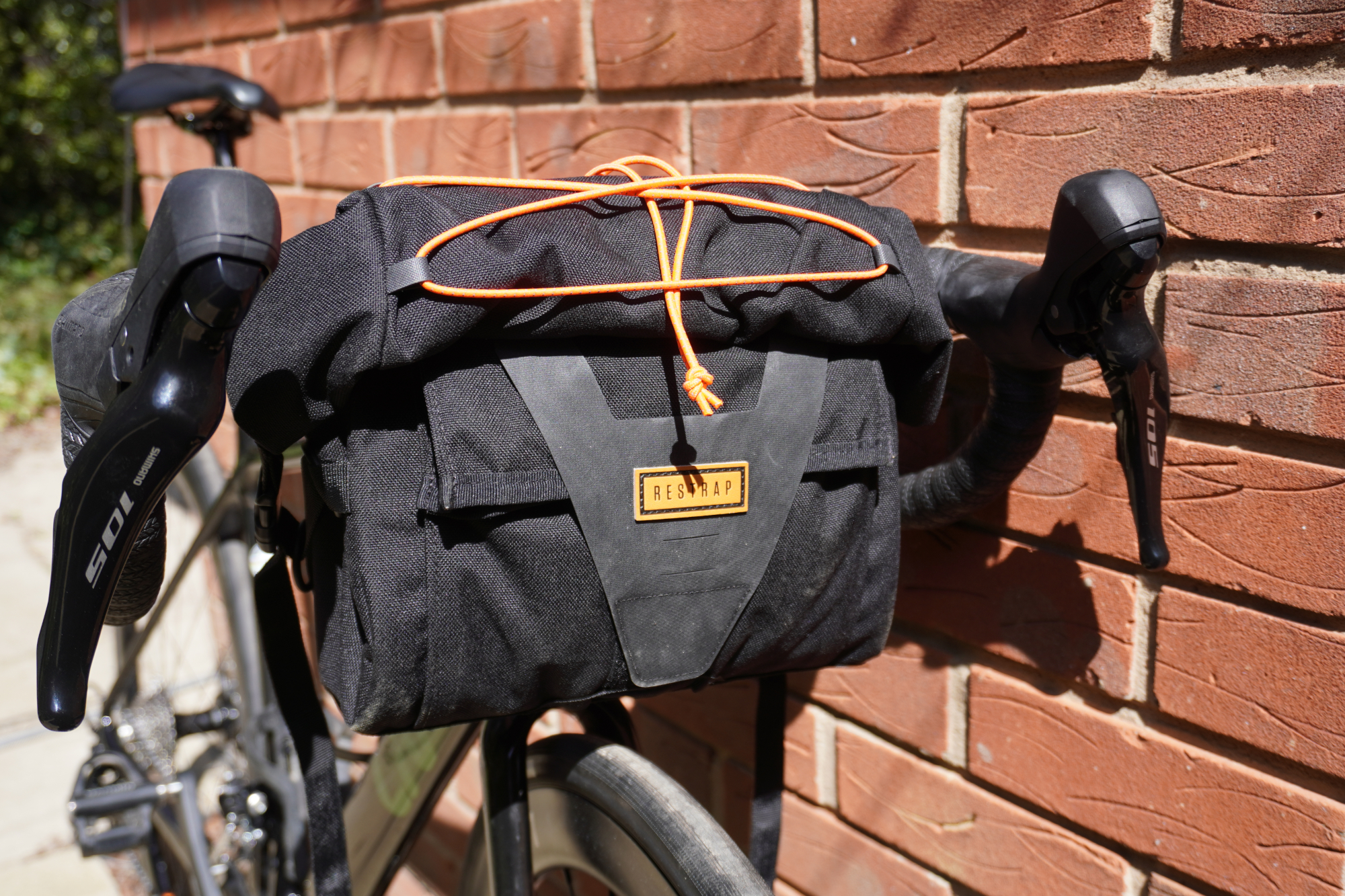
Specifications
Reasons to buy
Reasons to avoid
Restrap's 10-liter Bar Pack is made from durable, waterproof nylon. It has an easy-to-use roll-top that's closed using two buckles, with this main compartment complemented by a smaller secondary compartment that uses a Velcro closure. Essentially this means that you can still access items while on the go. On test we loved this combination, with the roll-top being a real winner.
The bag's generous 10L capacity allowed us to carry all we'd want to in a bar bag, with the compression straps doing a neat job of keeping everything in place. The additional details of both a D-lock holder and bungee webbing only added to the Bar Pack's functionality and appeal.
Read more: Restrap Bar Pack full review
Best bikepacking large handlebar bag
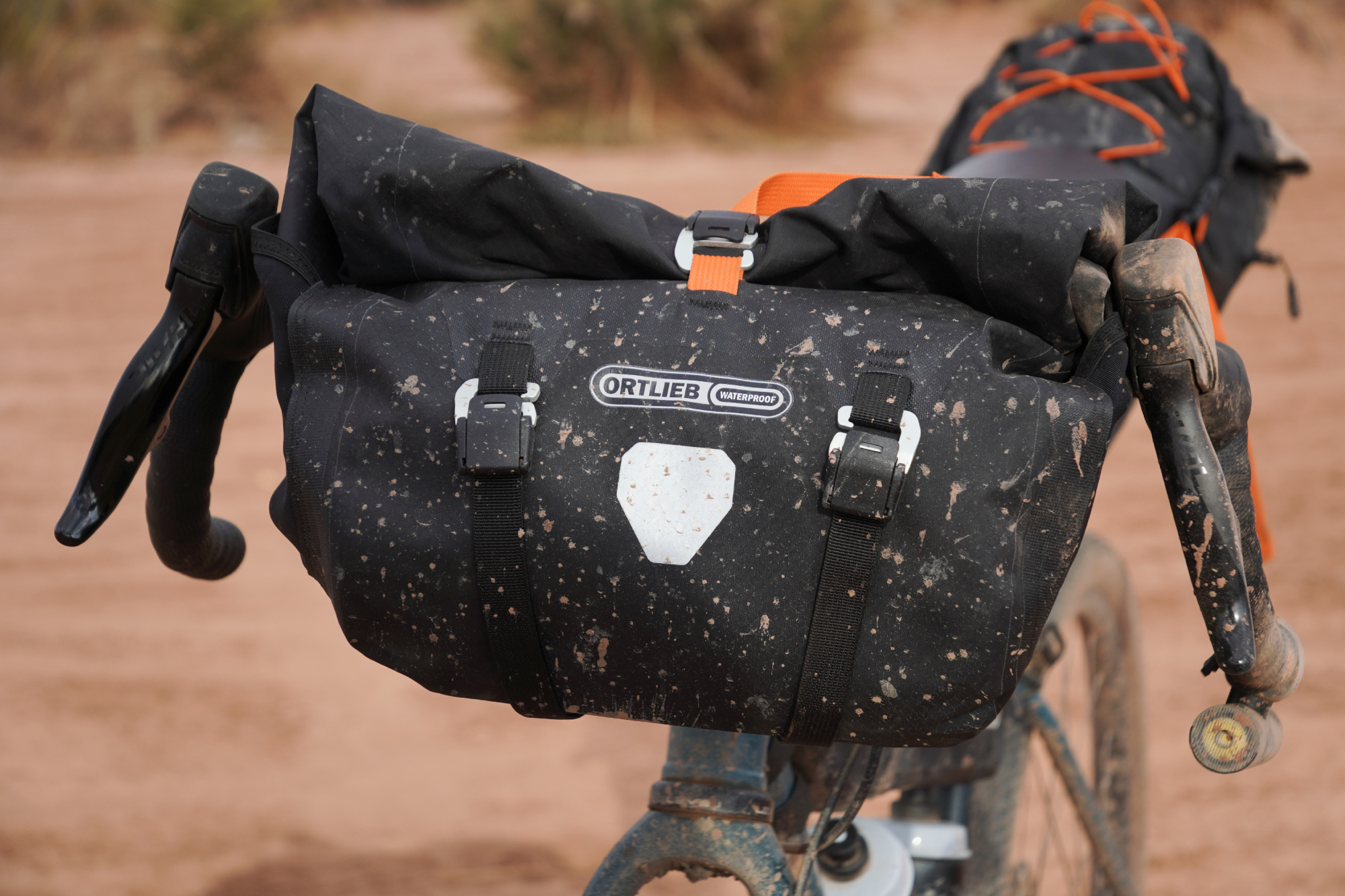
Specifications
Reasons to buy
Reasons to avoid
Rather than the more usual straps or permanent bolt-on support, the Ortlieb bag has a plastic bracket on which the bag hangs. This attaches without tools to the bars, making it easy to remove when not required and preventing the bag from rubbing on the frame.
The 11-liter capacity means that you can pack a lot into the bag, although it's a little wide for drop bar bikes, when the side mesh pockets are really only suitable for gel wrappers. Ideally, you need at least 44cm bar width to take full advantage of the bag's capacity.
Read more: Ortlieb Handlebar Pack QR full review
Best top tube bag

Specifications
Reasons to buy
Reasons to avoid
The Evoc Top Tube Bag provides 0.5 liters of extra carrying capacity for those things you need to get to easily on your ride. Its rigid build means that you can fit heavier items like a (smaller) phone as well as gels and the like. There's a waterproof zip and an internal mesh pocket that helps with organisation.
The bag is easy to attach to the bike via three Velcro straps and remains firmly in place. There's adequate space, it's durable and the Evoc bag isn't expensive for a quality build.
Read more: Evoc Top Tube Pack full review
Best frame bag
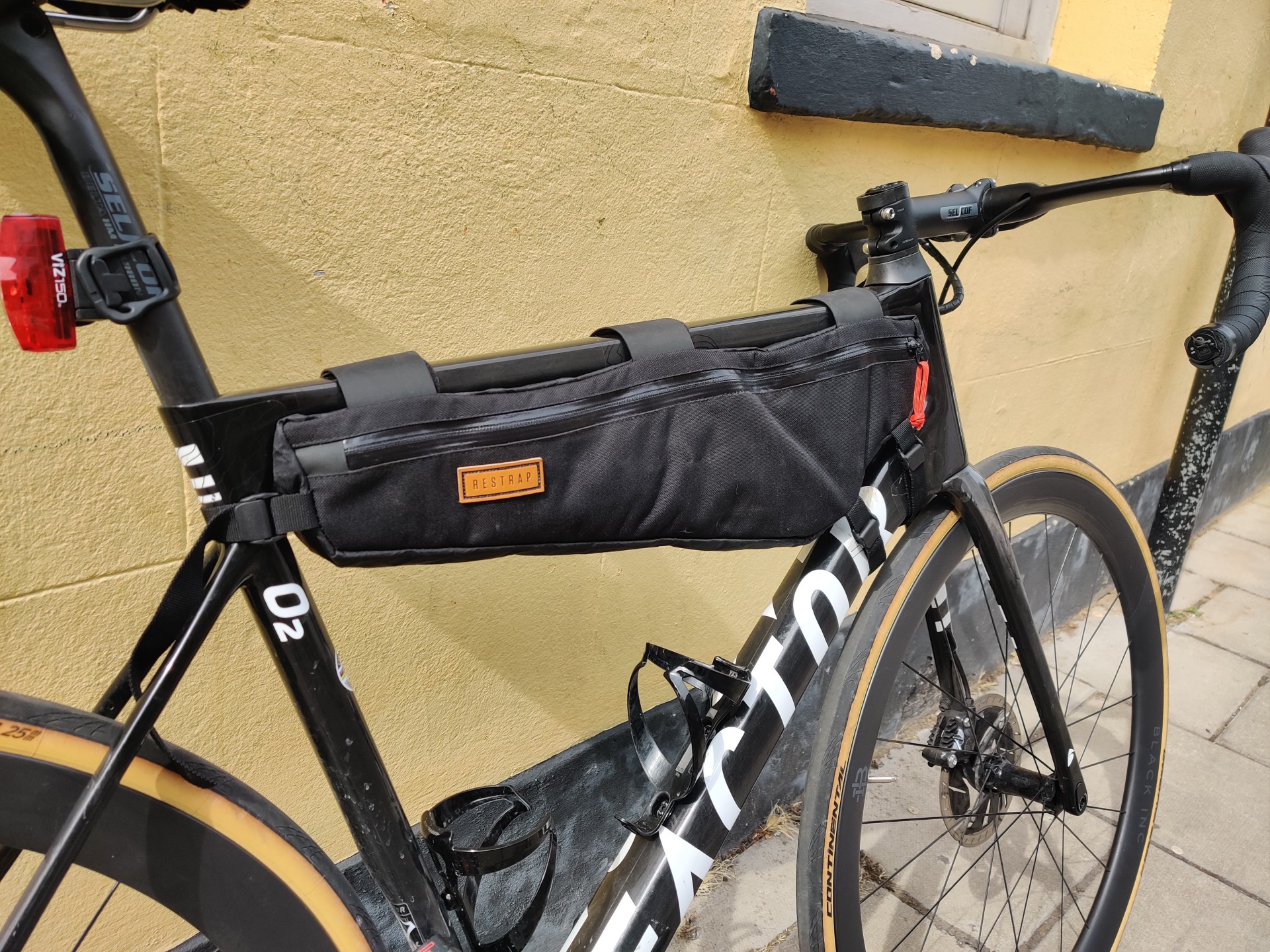
Specifications
Reasons to buy
Reasons to avoid
Restrap offers the Frame Bag in three sizes, with the Large offering 4.5 liters capacity and its 50cm length fitting a size 56 frame perfectly - it should work for a 54 too.
Attachment is via three rubberised Velcro straps on the top tube plus two more on the down tube and a further one on the seat tube, making sure that the bag doesn't move around as you ride. It holds its shape well too and is good for heavier items.
Full-length zips on both sides and a central divider, along with internal pockets help with organisation. It's waterproof, save for some ingress through the cable port on the top of the bag.
Read more: Restrap Frame Bag Large full review
How we test
Bikepacking bags can only be truly assessed by using them extensively on tours and fully loaded; what may be unnoticeable or seem inconsequential at home might become a real issue after three nights away or 100km into a challenging ride. Luckily, Cycling Weekly has several keen and experienced backpackers on hand to put the bags through their paces.
Living out of a bag is never easy, and doing that whilst out in the elements is even more so. So, what are we looking for? First of all, ease of attachment and ability to get it packed and ready to ride. Everyone hates a 'faffer', especially when you need to get on the road or keep moving.
Stability is key on the bike for all bikepacking bags, whatever their size, literally nothing worse than a sagging bag or one that wags around like a spaniel's bottom. Durability and weatherproofness are also key; you want to be able to arrive at your destination, get your sleeping kit out and some dry clothes in the knowledge they won't be drenched.
Finally, how the bags interact with the rider in use; if the zip is a bit of a pain to do up at home, it almost certainly will be a pain when the bags are fully loaded and you are trying just to get a gel to make it to the top of the hill.
For more in-depth information on what we look for in the best cycling products, visit our How We Test page.
How to choose the best bikepacking bags for you
Do I need a seat pack for bikepacking trips?
Seat packs are the modern alternative to racks and panniers - but some do feature a lightweight supportive rack. These offer great versatility as you can fit them to almost any bike in a matter of minutes (you'll need to look at specific models if you run a dropper post though).
These seatpost bags typically mount using straps around the seatpost and through the saddle rails. Check that you have plenty of seatpost available for the size of the bag attachment, and smaller riders may find they'll have to opt for a smaller capacity bag here.
Waterproofing varies between models and also has a noticeable impact on cost. Opting for a fully waterproof seat pack (or any bikepacking bag for that matter) will make your life much easier at the end of a long, wet day in the saddle. Alternatively, invest in some good dry bags to pack inside your bags to keep your kit dry.
Often with a generous capacity, a seat pack can be a great place to store bulkier items such as your sleeping bag, clothing and bivvy bag. It may take some time to get used to the feeling of riding with a full seat pack, as your centre of gravity will be raised higher which will affect handling, hence why they are best used for lighter items.
What should I store in a handlebar bag?
Handlebar bags offer great storage capacity at the front of your set-up, both for drop bar and flat bar bikes. For bikepacking trips, the larger bags offer more space, although they're best suited to large and bulky items just like seat packs, as they can be harder to get in and out of quickly.
Mounting-wise, it might take a bit of fiddling to get your dashboard set up just right, especially if you are using a bike computer and lights too. Bar shape will also play a role in system compatibility, although many will work across both straight and drop bar cockpits. However, you will need to consider how they work with the space between the shifters, how much drop there is on your bike from bar to front wheel and your front-end cabling before deciding on capacity.
You might find a handlebar harness is a good alternative for you. This allows you to mount anything from a tent or sleeping bag to a drybag or small duffel bag in front of your bars. Again, like any front bag, you'll need to think about cockpit size, shape and braking, with disc brakes being preferable and cantilever the least compatible.
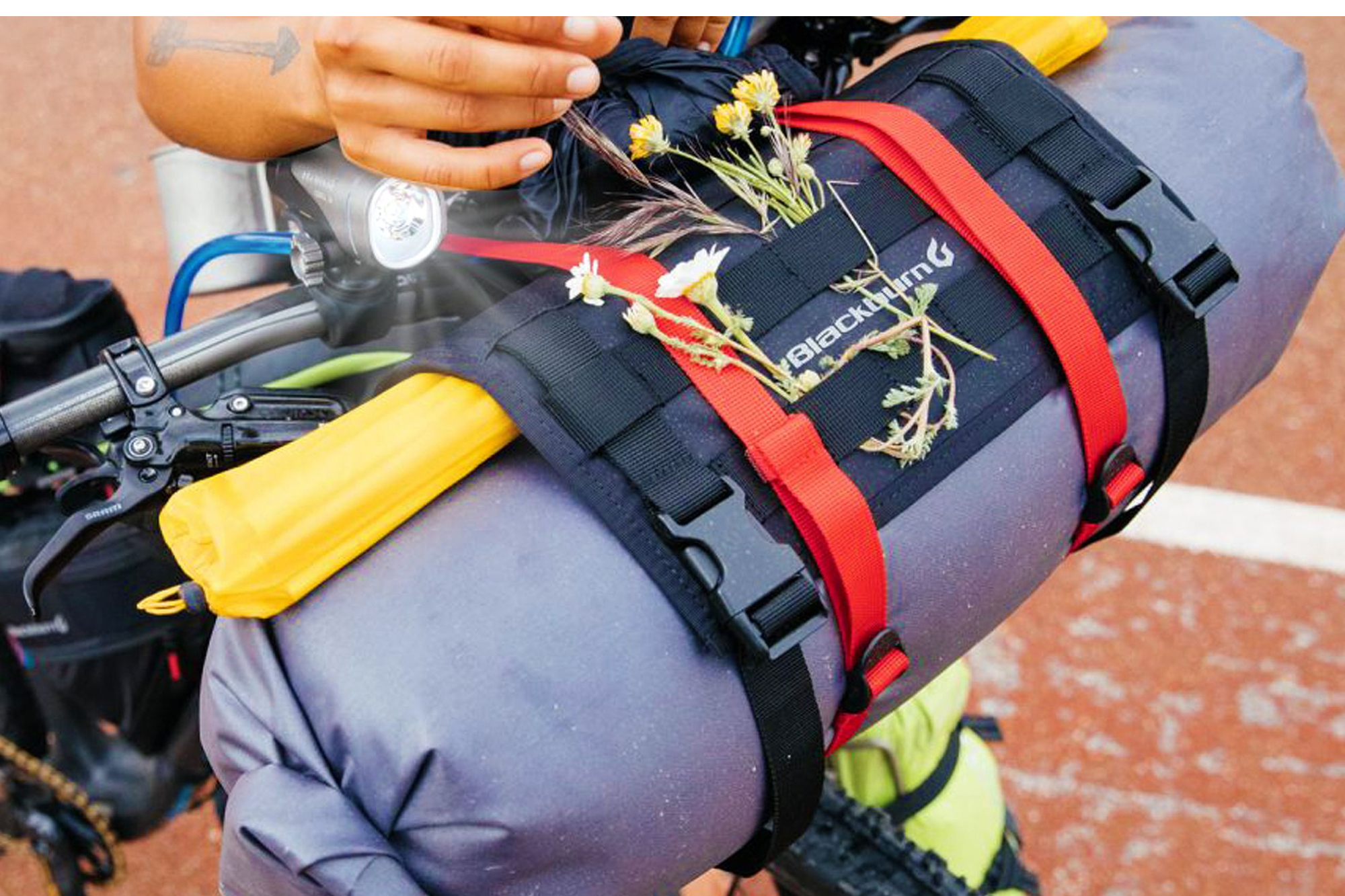
How do I choose a frame bag for bikepacking?
Do I need a full or half-frame bag - and how do I pack it?
Choose between full-frame bags that fit inside the whole front triangle down to the bottom bracket, or smaller half-frame bags that run along the top tube and leave space for your water bottles. If you're going for the first option, you'll need to think about how else to store your water, for example using a bladder and hose system in the frame bag or on your back.
Although frame bags can be a great way to make use of space on the bike for storage, you'll need to carefully check for compatibility. Smaller frames, sloping top tubes and suspension can make fitting tricky, which is why some people opt to go for a custom-made frame bag.
The other important point about frame bags is that you'll need to learn to pack them well. This narrow space doesn't lend itself to bulky items but is better suited to storing flatter kit, thus resulting in the bag bulging less and reducing the possibility of interference with either you and your pedalling or cranks. If using a half-frame bag, this is a great option for small items that you like to keep close to hand, including snacks, electricals, and toiletries.

Are there other bags well-suited to bikepacking?
Yes, frame, seat and bar bags aren't the only way for you to carry your gear on a bikepacking trip.
Having a small bag that you can gain easy access to while on the bike can be a game changer in terms of not having to dismount, which is easier said than done when you have a fully laden bike to balance, and you can simply reach in while on the move for food or electrical items.
Snack pouch bags can be very versatile, often with Velcro straps meaning you can fit them to almost any bike. If you don't want to wear anything with pockets on a short blast or you are looking for extra storage on a week-long trip, these little bags can make a big difference.
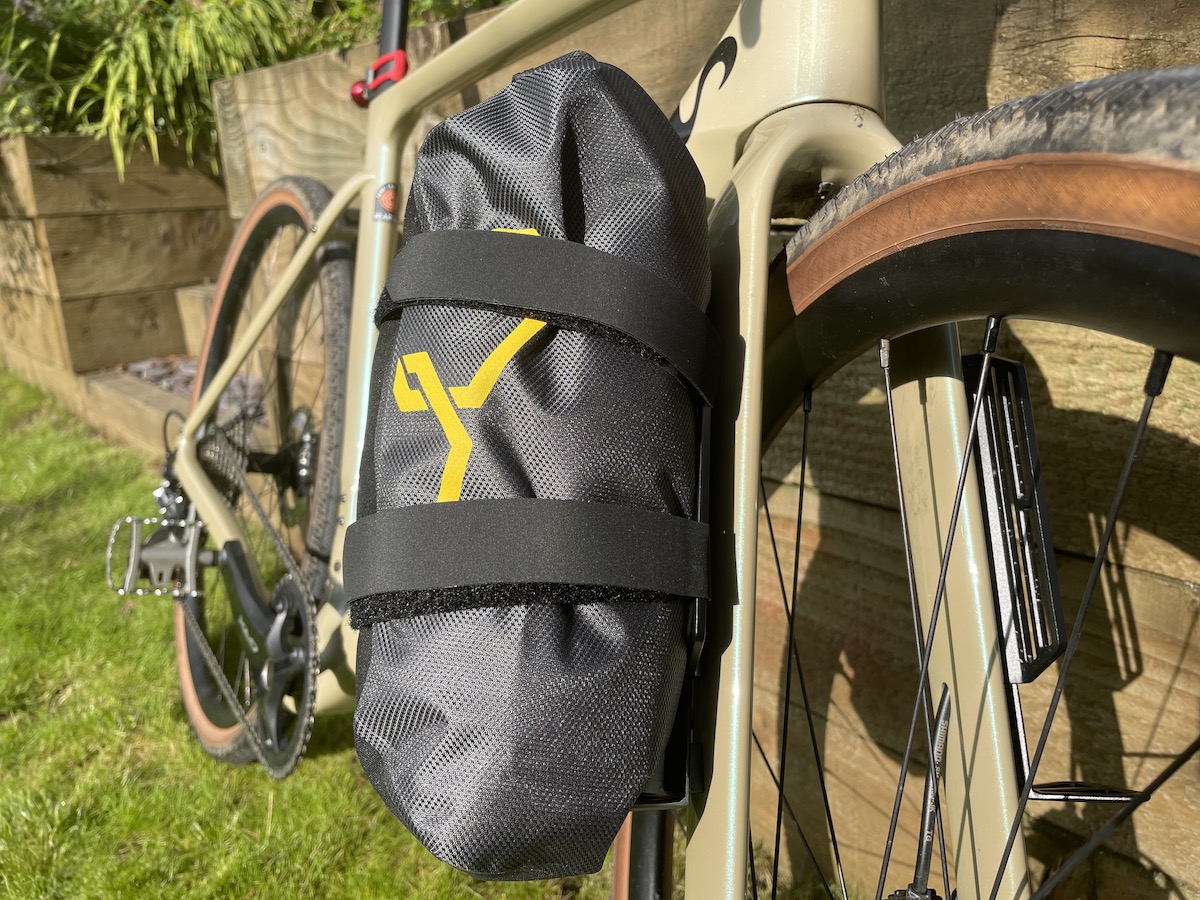
The obvious alternative to bags strapped to your frame is to cantilever them over your wheels in the form of panniers. These will significantly increase your carrying capacity, but that in turn will slow your progress.
If you have a bike intended for touring or bikepacking, you might find the forks come with leg mounts for extra bottle cages, and there are also after-market options that allow you to clamp on additional mounts. These immediately give you increased carrying capacity, either for water or an extra bag.
Frequently asked questions about bikepacking bags
What bags do I need for bikepacking?
To get started in bikepacking, you really don't need any bags. It's not ideal, but you can certainly start out with one of the best backpacks for cycling and some dry bags strapped to your handlebars, for example.
However, it is generally accepted that a good handlebar bag and seat pack are the most valuable options, with top tube bags, frame bags and other things like fork packs or down tube packs being additional luxuries.
Unfortunately, seat packs and handlebar bags also tend to be the most expensive to purchase for this reason. So, if possible, borrow one from a friend first and see what works for you.
What size saddle bag do I need?
Saddle bags or seat packs tend to be useful for bulky but light kit, for example, sleeping bags, clothing or a tent canvas. So, try to tailor the size of the pack to what you need to put in it.
Its worth balancing the size also to avoid any sagging or wagging. So, if you can get away with a smaller pack it will almost certainly be more secure. Most people will tend to find between seven and eleven liters is an ideal middle ground.
What is the best material for bikepacking bags?
Most bikepacking bag manufacturers have certainly settled on modern, durable fabrics made with ripstop technology and nylon, as these will take a waterproof coating. They also offer decent structural composition and can be engineered to offer multiple openings using waterproof zips etc.
However, there is still a strong following for more traditional methods, which are certainly more environmentally friendly, like waxed canvas and handmade using old or damaged recycled garments and materials.
Both have their pros and cons but I would tend to lean toward the more modern options, not only are they getting more environmentally friendly but I have found them to be more reliable.
The latest race content, interviews, features, reviews and expert buying guides, direct to your inbox!
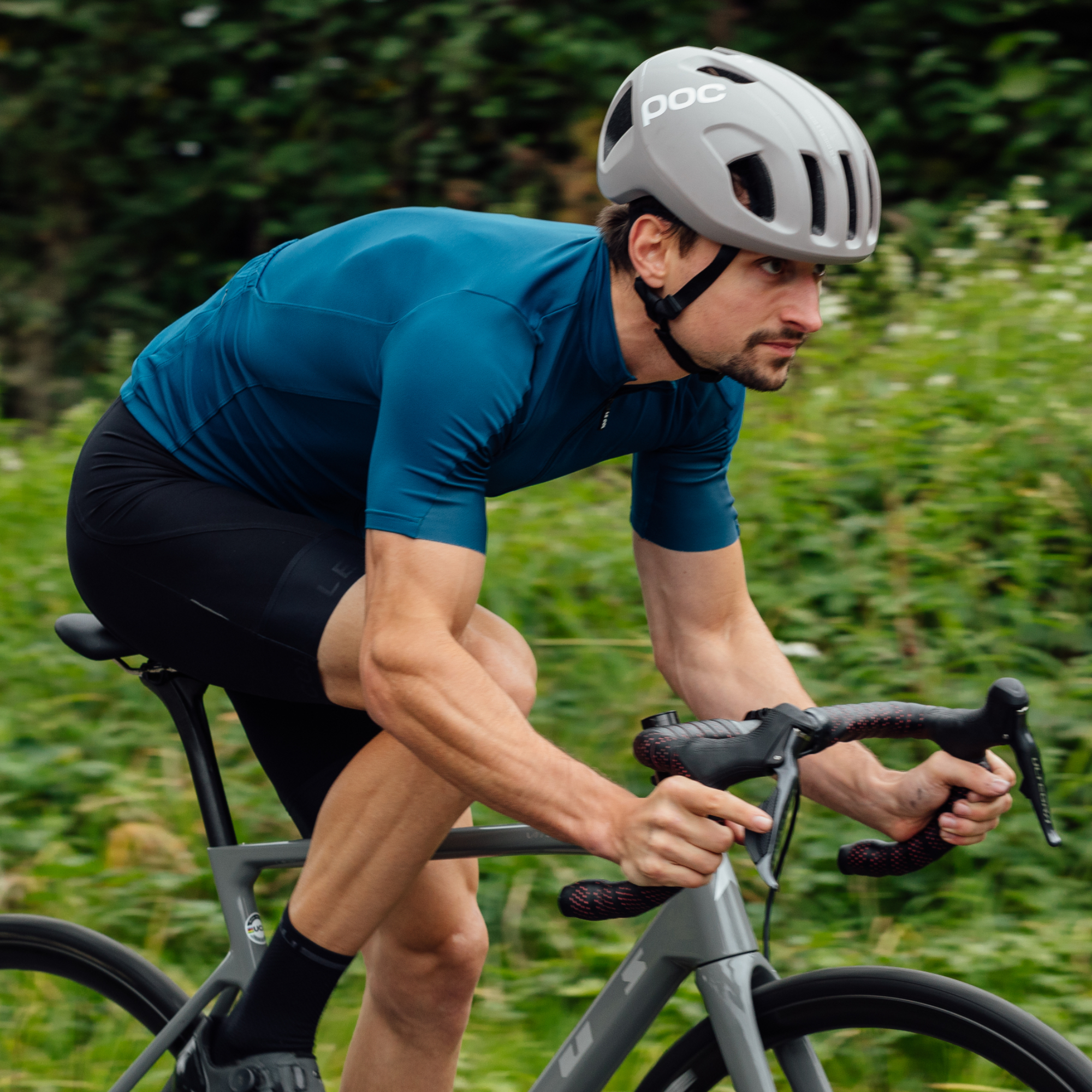
After winning the 2019 National Single-Speed Cross-Country Mountain Biking Championships and claiming the plushie unicorn (true story), Stefan swapped the flat-bars for drop-bars and has never looked back.
Since then, he’s earnt his 2ⁿᵈ cat racing licence in his first season racing as a third, completed the South Downs Double in under 20 hours and Everested in under 12.
But his favourite rides are multiday bikepacking trips, with all the huge amount of cycling tech and long days spent exploring new roads and trails - as well as histories and cultures. Most recently, he’s spent two weeks riding from Budapest into the mountains of Slovakia.
Height: 177cm
Weight: 67–69kg